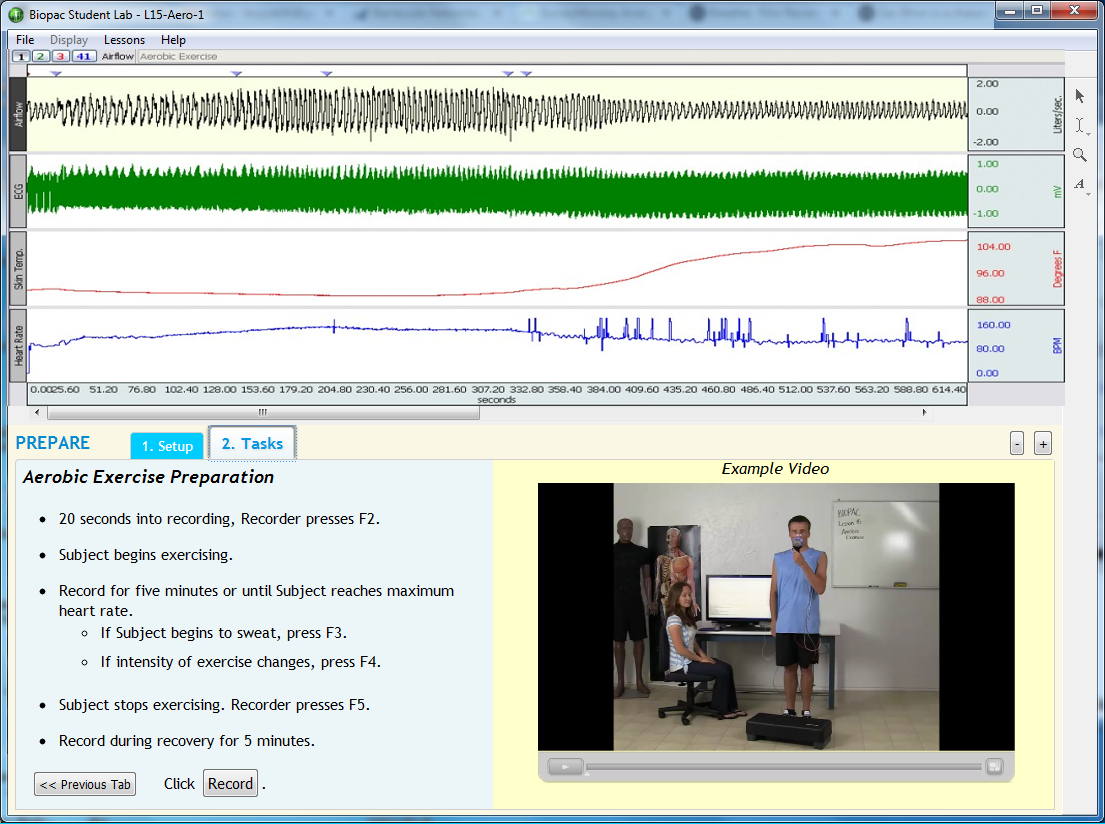L15 Aerobic Exercise Physiology

In the Aerobic Exercise Physiology lesson, students use the BSL System to record ECG, heart rate, airflow, and skin temperature under a variety of conditions.
Students will see how their respiration pattern, the electrical activity of the heart, heart rate, and skin temperature change to meet changing metabolic demands.
Students perform a number of tasks designed to reach their personal maximum heart rate.
Experimental Objectives
-
Observe and record respiratory changes to meet changing metabolic demands with changing activity levels.
-
Observe and record changes in electrical activity of the heart with changing activity levels.
-
Observe and record changes in skin temperature coincident with sweat gland activity and activity levels.
Tasks Performed by the Student
BSL Lessons are designed to allow at least four students to record and save data in a normal lab period (60-90 minutes). Typically, labs work most efficiently with three or more students working together at each BSL station.
- Record airflow, ECG, heart rate and temperature.
- Calculate their personal maximum heart rate.
- Exercise for 5 minutes, or until they have achieved their maximum heart rate.
Videos
BSL L15 Recording
Biopac Student Lab Student Download
Lesson Hardware
This lesson requires a Biopac Student Lab (BSL) System and the following hardware. If your BSL System does not include all hardware items, expand your system by selecting required items below. For more details, review the Lesson: L# BSL Lessons - see the Lab Manual or launch BSL; A# and H# BSL PRO Lessons, click the PDF link above to review full setup, recording, and analysis procedures.
Stay Connected